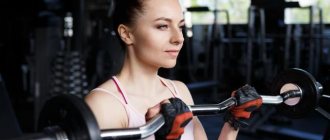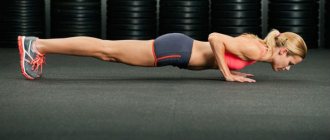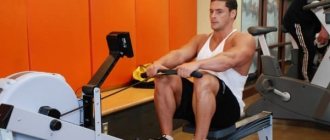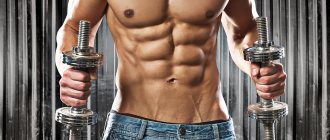- Previous
- Next
20.06.2016
Avoiding squats due to back pain? This exercise has worthy alternatives that provide comparable gains in strength and muscle mass.
Author: Jim Stoppani, Ph.D.
Can you imagine yourself in the shoes of a basketball player who has to replace Michael Jordan in the Chicago Bulls? Or in the post of Tim Cook, who continued the work of Steve Jobs at Apple? Or as the quarterback who will replace Tom Brady when he hangs up his cleats? The task is not easy.
My defense of exercises that can replace squats may be met with similar skepticism. Yes, the back squat is the “king of exercises” and I’m as big a fan of it as you are. But if you're concerned about the increased risk of injury, or you just absolutely hate squats, don't force yourself to do squats in the traditional sense.
However, I highly recommend incorporating some variation of squats into your training program regularly (at least once a week). This is a fundamental movement not only in the world of training and sports, but also in real life. I know barbell squats can be dangerous for your lower back and knee joints - believe me, I've had back problems too. But there are plenty of movement modifications that reduce stress on vulnerable areas and generate excellent growth stimuli for the glutes, quads, hamstrings and other parts of the body. In terms of effectiveness, these options are quite comparable to traditional squats with a barbell on the shoulders.
Below we will look at six such exercises. Incorporate either of these into your routine instead of standard squats, and you'll see (virtually) the same strength and muscle gains as the crowned king.
Alternative 1: Front Squats
Arguments in favor of replacement. It's still a squat, but since the bar is on the chest instead of the shoulders, the difference is very big. Compared to standard squats, front squats target the quads more than the glutes, so this is a great exercise for anyone looking to tone the front of their thighs.
Front Squats
But what is especially important for people with lower back pain, front squats force you to keep your body in the most vertical position (otherwise the barbell will fall to the floor), thereby reducing the load on the spine.
Expert advice. Cross your arms over your chest to create a “shelf” for the barbell. Use the grip that suits you best. Lower yourself until your thighs are almost parallel to the floor.
Alternative 2: Jefferson Squats
Arguments in favor of replacement. The exercise is often called a Jefferson deadlift, but because your back is upright, it's more like a squat than a traditional deadlift, where you have to lean forward because the bar is in front of your legs. In this variation, you need to “saddle” the barbell. A straight back is the main reason why many people choose Jefferson squats for spinal problems.
Expert advice. The body is tense, chest forward, back straight, rise with the barbell by extending the knee and hip joints, pushing off with the heels. As you reverse the movement, allow your buttocks to lean back slightly. When your thighs are parallel to the floor or the bar touches the ground, return to a standing position.
Alternative 3: Zercher Squats
Arguments in favor of replacement. Zercher squats are another great option for reducing stress on your lower back. The bar is located much lower (in the center of the body, and not on the shoulders), as a result of which the effect of compression force on the spine is significantly reduced. Similar to front squats, Zercher squats force you to keep your torso as vertical as possible while also allowing you to squat quite deeply.
Zercher Squats
Expert advice. Hang the barbell in a power rack below shoulder height. Place the barbell on the crook of your elbows, bent at a 90-degree angle. Bend your knees and hips; let your buttocks move back a little; lower yourself to the bottom position. When your thighs are parallel to the floor, generate force from your heels to return to a standing position.
Why do people try to replace squats?
- A significant portion of athletes are forced to look for what exercises can replace squats due to health problems. In particular, with the knees, shoulder or elbow joints, and the back.
- Another category is people who lose motivation due to monotony and boredom. Indeed, working out in the gym is painstaking physical work that gets boring very quickly. The athlete tries to diversify the training, trying to replace some exercises with others.
- Some people simply don’t have the opportunity to go to the gym, so they are looking for an alternative to doing squats with a barbell at home.
- Or, a person simply does not have the experience and opportunity to hire a professional trainer who would teach the correct squat technique.
Alternative 4: Single Leg Squats
Arguments in favor of replacement. The single-leg squat exercise has several other names (such as Bulgarian split squats), perhaps because it is a cross between squats and lunges - legs apart, one leg in front, the other in back. A lunge-like position helps keep your back perpendicular to the floor and prevents you from leaning dangerously forward, which often causes lower back pain.
Since one leg is behind you, you can move your front leg as far forward as necessary to protect the knee joint from unnecessary stress. In this exercise, you have a choice: you can put a barbell on your shoulders or pick up dumbbells.
Expert advice. If you choose dumbbells, grip strength may be the limiting factor; in this case, switch to the barbell. Bend your front knee and hip. Lower yourself down until your front thigh is parallel to the floor. As you move up, push through your heel and return to the starting position, using your back leg to balance.
Workout for a round and firm butt without squats
Exercise No. 1
There is such an exercise for the buttocks - “rainbow”.
Usually performed on the floor while resting on the knee (as shown in the video). The Lifehacker Telegram channel contains only the best texts about technology, relationships, sports, cinema and much more. Subscribe!
Our Pinterest contains only the best texts about relationships, sports, cinema, health and much more. Subscribe!
However, there is another version of the same exercise that can be performed while standing.
shape.com
Stand up straight, place your hands behind your head. Shift your weight to your right leg, extend your left leg forward and slightly to the left.
shape.com
Next, maintaining your balance and not swaying, move your left leg to the side and then back, as if reaching to the opposite corner of the room. Without touching the floor in this position, return your leg to its original position (extend forward and slightly to the side) across the side. Imagine drawing a rainbow with this foot.
Perform three sets of 25 repetitions on each leg.
Exercise No. 2
shape.com
Stand up straight with your hands behind your head. The right knee is slightly bent, the left leg is moved back slightly, the toes touch the floor. In this position, lean forward so that your body is parallel to the floor and your weight is transferred to your supporting leg.
shape.com
From this position, straighten up and simultaneously move your left leg back and up, hold for just a couple of seconds and return to the starting position.
Perform three sets of 25 repetitions each on both legs.
Exercise No. 3
shape.com
Lie on your side, resting on your elbow. Your bent elbow should be directly under your shoulder. Legs are bent at the knees at an angle of 90 degrees. Straighten the leg on top and extend it forward. The thigh of the leg on which you are leaning lies on the floor, the other leg is raised and does not touch the floor.
shape.com
In this position, bend your leg at the knee, pull it towards your chest, and then straighten it again, returning to the starting position.
Perform three sets of 25 reps on each side.
Exercise No. 4
shape.com
Get on all fours with your elbows directly under your shoulders. Bend your working leg at the knee, trying to keep your heel as close to your body as possible.
shape.com
From this position, lift your working leg up and carefully, without throwing it, return it to the starting position. While performing this exercise, make sure that there is no arching in the lower back and that the working leg does not swing to the side (the lifts should go clearly up and down).
Perform three sets of 25 repetitions each on both legs.
Exercise No. 5
shape.com
I think that many people are familiar with the “bridge” exercise. It's very easy to do! Lie on the floor, your back is pressed to the floor, your legs are bent at the knees, and only the heel of your entire foot rests on the floor. The arms are extended along the body, palms facing down. Lift your pelvis up, twisting it slightly and resting your heels on the floor. Then slowly lower and, as soon as the tailbone lightly touches the floor, push the pelvis up again.
Perform three sets of 25 reps each.
This exercise can be performed with weights. The weight in this case is placed on the lower abdomen. Another option for complication is to rest your feet not on the floor, but on a steppe, bench or sofa.
Exercise No. 6
shape.com
And the last exercise for today is the “toad”. Lie on your stomach, legs bent at the knees and slightly apart, heels pressed together, arms bent at the elbows and serving as a support for your head (forehead rests on palms folded in front of it). Now try to lift your hips off the floor as much as possible (your heels should not leave each other), stay in this position for just a few seconds and slowly return to the starting position.
Perform three sets of 25 reps each.
Alternative 5: Smith Machine Squats
Arguments in favor of replacement. Anyone who blames the Smith machine for its lack of “practicality” is not opening their mind to the possibilities that this training tool offers. When applied to squats, the Smith machine has a number of undeniable advantages:
- Allows you to safely overload your lower body with heavy weights and maximize mass and strength gains without having to worry about balancing.
- Allows you to change the position of your feet and use different parts of your legs. For example, by moving your feet further forward (this will not work with a barbell), you will shift the load to the gluteal muscles, which will be very appealing to those who want to pump up this area with emphasis.
- Decreases ankle flexion and reduces stress on the knees as the feet move forward. Think of lunges, where a wider step forward prevents your knees from going past the plane of your toes.
Smith machine squats
Expert advice. Smith machine squats are a particularly good choice if you're performing the exercise at the end of a training session. For example, when you want to work your muscles with less weight against the background of preliminary fatigue. If you squat on an incline machine rather than a vertical one (the bar moves up and down), place your feet at the front edge of the frame and look forward to make it easier to follow the natural trajectory of the barbell.
Alternative 6: Barbell Hack Squats
Arguments in favor of replacement. At first glance, the exercise may seem a little strange, as if you were doing a deadlift in reverse, because the barbell is behind your legs, not in front of them. But that's the way it's meant to be. In fact, barbell hack squats have been around for many decades, much longer than the machine hack squats found in most commercial gyms.
This movement is unique because the bar is at the rear. The load on the lower back is lower compared to a standard deadlift because you don't have to lean forward as much. This position makes it much easier to keep your center of gravity over your heels, as you would during a standard barbell squat. This is a key benefit for people with low back problems.
Expert advice. Both palms can face backwards, but if you prefer, you can also use a cross grip, in which one palm faces forward and the other back. Keep your back straight (don't round your lower back) and your spine neutral during both the positive and negative phases of each repetition.
What do barbell squats do?
If you are at least a little familiar with the world of bodybuilding, weightlifting, or simply go to the gym from time to time, then you know that this exercise is a basic one in many programs. It targets multiple muscle groups and joints and is effective for both muscle building and cutting. Helps in the shortest possible time to form a beautiful and attractive body for both women and men.
If you want to find a replacement for barbell squats, check out its main advantages to find something at least roughly similar:
- The exercise involves the hips, buttocks, arms, back and even the abs;
- It is universal, helps both build muscle and lose weight;
- Increases overall endurance, strengthens the cardiovascular system, improves breathing;
- Normalizes metabolism, thereby reducing weight.
As you can see, barbell squats are extremely effective, regardless of the goal that the athlete faces. Let us answer you honestly; you cannot truly fully replace them. If only for squats with a different weight - dumbbells or kettlebells. However, do not rush to get upset, there is always a way out! Let's find him together.
We will start from the reason that prompted you to look for what can replace squats with a barbell.











